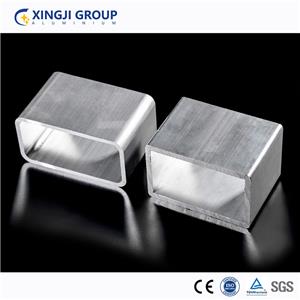What are the advantages and disadvantages of aluminum windows versus wood windows for Canada's climate?
Choosing the right type of windows is crucial for Canadian homeowners who face a wide range of weather conditions throughout the year. Two popular materials for window frames are aluminum and wood. Both options come with unique strengths and weaknesses, particularly when considered in the context of Canada's diverse climate. This article explores the pros and cons of windows in aluminium and wood, providing a comprehensive comparison to help you make the best choice.

1. Performance in Extreme Weather: Aluminum Windows Lead the Way
When it comes to withstanding Canada's harsh winters and fluctuating temperatures, high quality aluminium windows are a clear winner. Aluminum is known for its exceptional durability and resistance to environmental stressors. Unlike wood, aluminum does not warp, crack, or swell when exposed to freezing temperatures or heavy snowfall. This makes windows in aluminium a reliable choice for homeowners seeking longevity.
Another advantage of aluminum is its corrosion resistance, which is particularly valuable in coastal areas where salt air can accelerate wear and tear. Additionally, aluminum's strength-to-weight ratio allows for sleek, modern designs, such as large glass panes supported by slim frames. This is a significant advantage for those who prefer expansive views and contemporary architectural styles.
However, aluminum has high thermal conductivity, which can result in heat loss during cold seasons. Fortunately, many high quality aluminium windows now come with thermal breaks or insulation technologies to improve energy efficiency. Although these advanced features can drive up aluminium windows prices, they offer excellent long-term benefits in terms of energy savings and comfort.
2. Aesthetic and Insulating Qualities: The Case for Wood Windows
For homeowners seeking a more traditional or natural look, wood windows are a compelling option. Their timeless beauty and warmth can enhance the aesthetic appeal of both modern and classic homes. Wood frames offer a level of customization that aluminum cannot easily replicate, as they can be painted or stained in various colors to match interior and exterior designs.
In terms of insulation, wood naturally outperforms aluminum. Wooden frames provide superior thermal insulation, helping to maintain a comfortable indoor environment during Canada's cold winters. This can lead to significant energy savings, as less heat escapes through the windows. However, it's worth noting that advanced aluminium sash windows with thermal barriers are closing this insulation gap.
Despite their aesthetic and insulating advantages, wood windows come with challenges. They require regular maintenance, including painting and sealing, to protect against moisture and insect damage. In regions with high humidity, wood is prone to warping and rotting, which could lead to costly repairs or replacements. In contrast, aluminium sliding window designs require minimal upkeep, making them a more practical option for those seeking low-maintenance solutions.

3. Cost and Environmental Considerations: Making an Informed Choice
One of the most significant factors in choosing between aluminum and wood windows is cost. Aluminium windows prices are generally lower than those of wood windows, particularly for standard designs. Additionally, aluminum's low maintenance requirements can result in substantial long-term savings. However, if you opt for custom aluminum windows with advanced thermal technologies, the cost can rise significantly.
Wood windows, while often more expensive upfront, can provide better long-term value in terms of energy efficiency. Their insulating properties can reduce heating costs, which is a crucial consideration in Canada's cold climate. That said, the ongoing maintenance expenses of wood—such as regular painting and sealing—can offset these energy savings over time.
From an environmental perspective, wood is a renewable resource and can be sourced sustainably. However, aluminum has its own advantages. While its production requires significant energy, aluminum is highly recyclable, meaning old frames can be repurposed into new products. For environmentally conscious homeowners, both materials offer ways to minimize their carbon footprint.
The Right Window for Your Climate and Needs
The choice between windows in aluminium and wood ultimately depends on your specific needs and priorities. If you're looking for a durable, low-maintenance option that performs well in harsh weather, high quality aluminium windows are a smart investment. Options like the aluminium sliding window or aluminium sash offer modern aesthetics and excellent performance, particularly when equipped with thermal breaks to enhance insulation.
On the other hand, if you value aesthetic versatility and natural insulation, wood windows may be the better fit. However, be prepared for the ongoing maintenance they require to stay in top condition.
By carefully weighing the pros and cons of each material, along with considerations such as aluminium windows prices and maintenance costs, you can select windows that will enhance your home's comfort, energy efficiency, and curb appeal in Canada's diverse climate.




